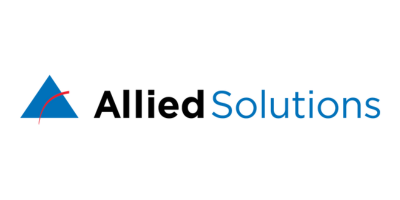P&C Insurance Digital Transformation Trends to Watch
The intersection of technology and customer experience is where the evolution of digital transformation in insurance can be found.
The insurance industry for property and casualty is being changed by digital technology. The use of technologies such as telematics, the sharing economy, big data, digital communication platforms, and competition are leading companies to focus less on their products and processes, and more on customizing the customer experience.
Insurance consumers now have different expectations and usage patterns than they did before. Property and casualty insurance companies should be prepared to use technology and implement a thorough customer strategy when engaging with policyholders.
Providing a top-notch experience has become challenging due to the “Amazon effect,” where consumers expect excellence from every industry. Additionally, insurance needs have changed, with young adults delaying home purchases and driving less. Members demand tailored products and services to suit their lifestyles and are willing to explore non-traditional brands to fulfill these requirements.
The use of technology and data insights presents a chance to personalize the customer experience instead of just concentrating on products. Various technological advancements such as telematics, mobile apps, drones, and self-service are positively affecting different aspects of the industry such as products, claims, services, and pricing. Additionally, the emerging “insurtech” industry has received over $1 billion in funding, as per CB Insights.
P&C insurers have the chance to become more strategic in their interactions with members and operations, thanks to these trends. By doing so, they can decrease expenses and risks and enhance customer relationships.
As P&C executives, you may be interested in four insurance technology trends that focus on improving customer experience through technology. The trends mentioned are expanding next-generation products, incorporating telematics, offering usage-based insurance, and utilizing chatbots.
1. Evolution of consumer needs unveils a vast array of product possibilities
A decade ago, the insurance industry did not have many of the new products available today. Examples of these new products include identity theft protection, extensions to property insurance, car insurance specifically designed for ride-sharing passengers, and self-service apps that aim to make insurance services more efficient.
Executives in the industry should avoid jumping on the tech bandwagon to shed their laggard reputation unless there is a significant customer need. Instead, they should focus on rethinking products and using data to enhance existing products and services based on actual customer needs. Simply using cool technology is not a sufficient reason to make changes. Instead of completely changing things, sometimes just making small, personalized changes can be enough. It’s important to be accessible to members through their preferred channels, such as mobile devices, especially for those who think about products and services while on the go.
2. Achieving personalization on a large scale with telematics
Telematics involves gathering diagnostic data from a device and sending it to your insurance company. This information helps the company gain customer insights and create digital insurance strategies that can increase revenue, reduce costs, and build stronger and more profitable relationships with customers.
The potential to be revolutionary and more people are starting to use it. However, there are concerns about privacy. Our research indicates that companies can increase adoption and gain a competitive edge by prioritizing the needs of their customers when implementing the program.
Telematics systems promote safe driving practices that lead to fewer accidents, resulting in lower insurance claim payouts and improved profitability for insurance companies. A report by Cisco Internet Business Solutions Group found that vehicle connectivity can generate savings of up to 80% in claims and cost management. As insurers continue to study driving habits, they will gain additional insights that will benefit underwriting and claims, as well as sales and retention.
Insurers can save costs and respond to claims faster with technology like advanced crash notification. This provides early notice of loss and real-time accident data, allowing for more precise and efficient claims settlements, fraud detection, emergency response, and assistance such as tow, rentals, and repairs.
Telematics in homes can be used to connect with in-home video cameras to create digital inventories of the home’s contents. This helps to speed up the process of filing claims and makes it simpler to recover losses. Insurers can also analyze energy consumption data and usage patterns with utility partnerships to improve their pricing strategies for liability or dwelling coverage.
3. Surge in popularity of usage-based insurance pricing
The traditional insurance industry has relied on general data, such as demographics and geography, to determine underwriting and risk assessments. However, Usage-Based Insurance (UBI) changes this approach by using telematics to assess individual usage and adjust premiums and policies accordingly.
According to the National Association of Insurance Commissioners, within three years, approximately 20% of all vehicles insured in the U.S. are expected to be covered by usage-based insurance policies. This trend is advantageous for both insurers and policyholders.
As insurance companies offer usage-based insurance (UBI), there are opportunities for improving customer experience. Despite awareness of UBI growing from 39% to 43% since 2015, companies that focus solely on promoting its use for cheaper premiums may not attract customers who are not motivated by discounts. Furthermore, even though half of the consumers who are offered UBI enroll, only 20% of them report being made aware of this option in the first place.
It is important to mention that customers are holding off on signing up until they have access to unbiased feedback. A recent survey revealed that 56 percent of respondents would not participate in a UBI program without reviews or feedback, and 40 percent stated that they would only enroll if someone they know has already joined.
Lastly, UBI is commonly considered a viable option for younger individuals, and for a good reason. According to Towers Watson, 72 percent of Millennials think it’s an effective method to determine auto insurance rates. Nevertheless, people aged between 45 and 64 are showing a rising interest in UBI as well.
4. Expanding presence of Property & Casualty chatbots
The use of chatbots is increasing, and the property and casualty insurance industry is still figuring out the best ways to utilize this new technology. Chatbots are automated conversations conducted through messaging apps such as Facebook Messenger and WhatsApp, as well as virtual assistants like Alexa and Google Home. They employ artificial intelligence and a constantly updated database to facilitate dialogue with real users. According to Business Insider, 60% of individuals in the Gen-X and Millennial age groups have already interacted with a chatbot on a messaging platform.
Insurance companies are discovering how chatbots can enhance various aspects such as sales and marketing, underwriting, claims, and customer service. Chatbots can assist customers by explaining complex products, simplifying complicated service interactions, and directing them toward the appropriate policy. However, insurance companies must be cautious when automating with chatbots due to the intricate and often empathetic nature of many insurance interactions.
The findings suggest a few ways to improve telematics adoption:
- Make it a priority across the entire company
- Set goals and measure adoption rates
- Offer usage-based insurance in preferred channels
- Promote adoption through word-of-mouth, social media, and customer testimonials.











